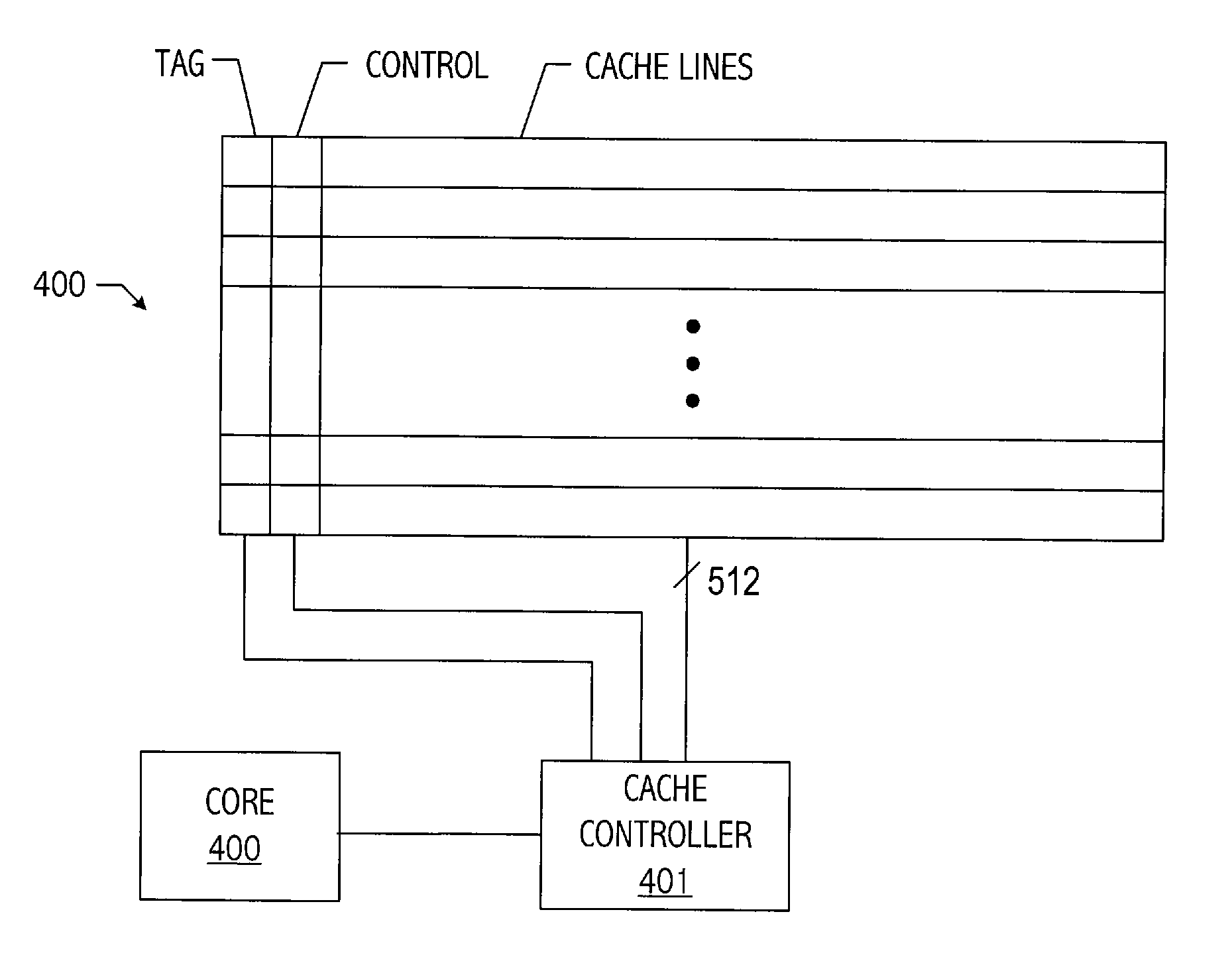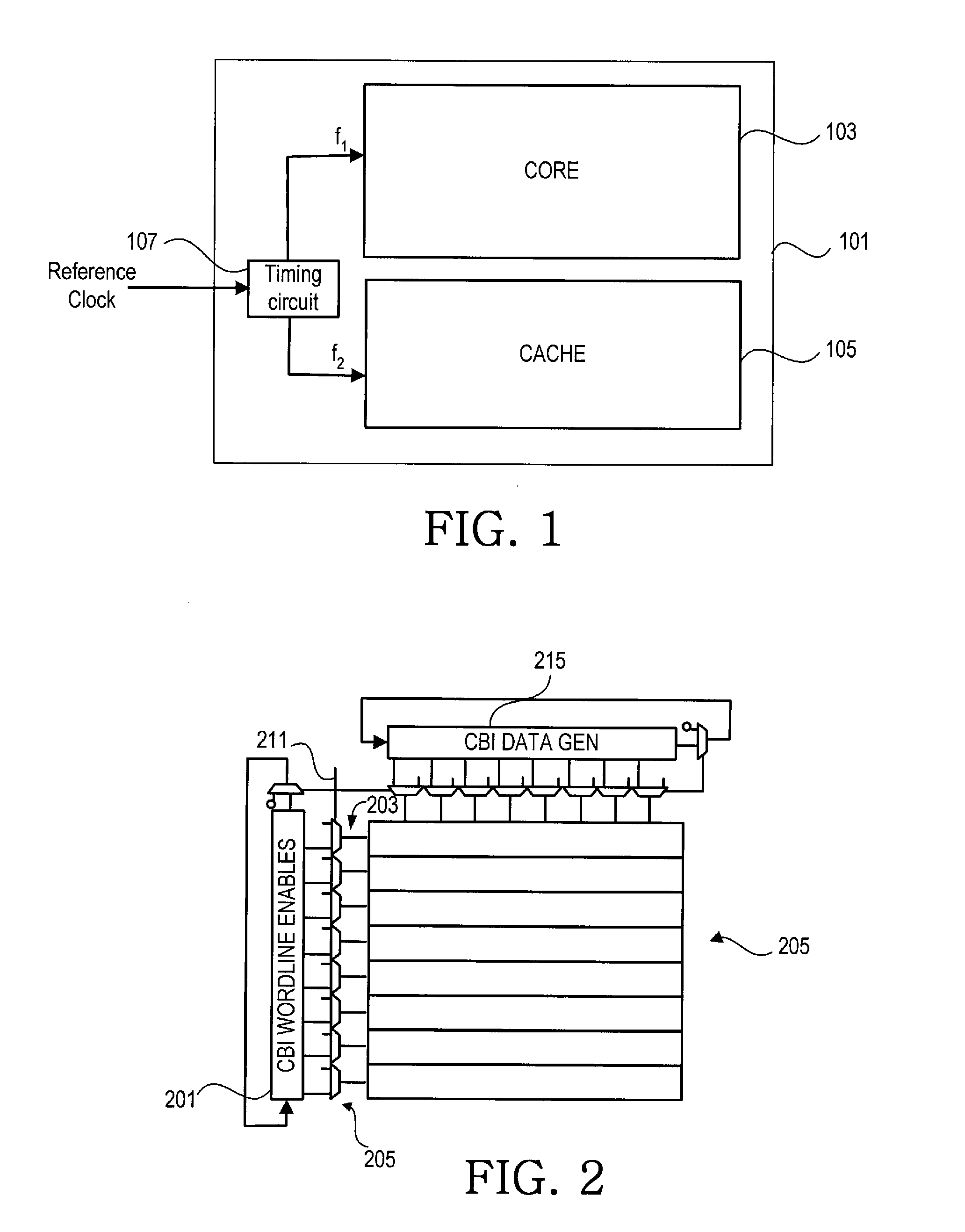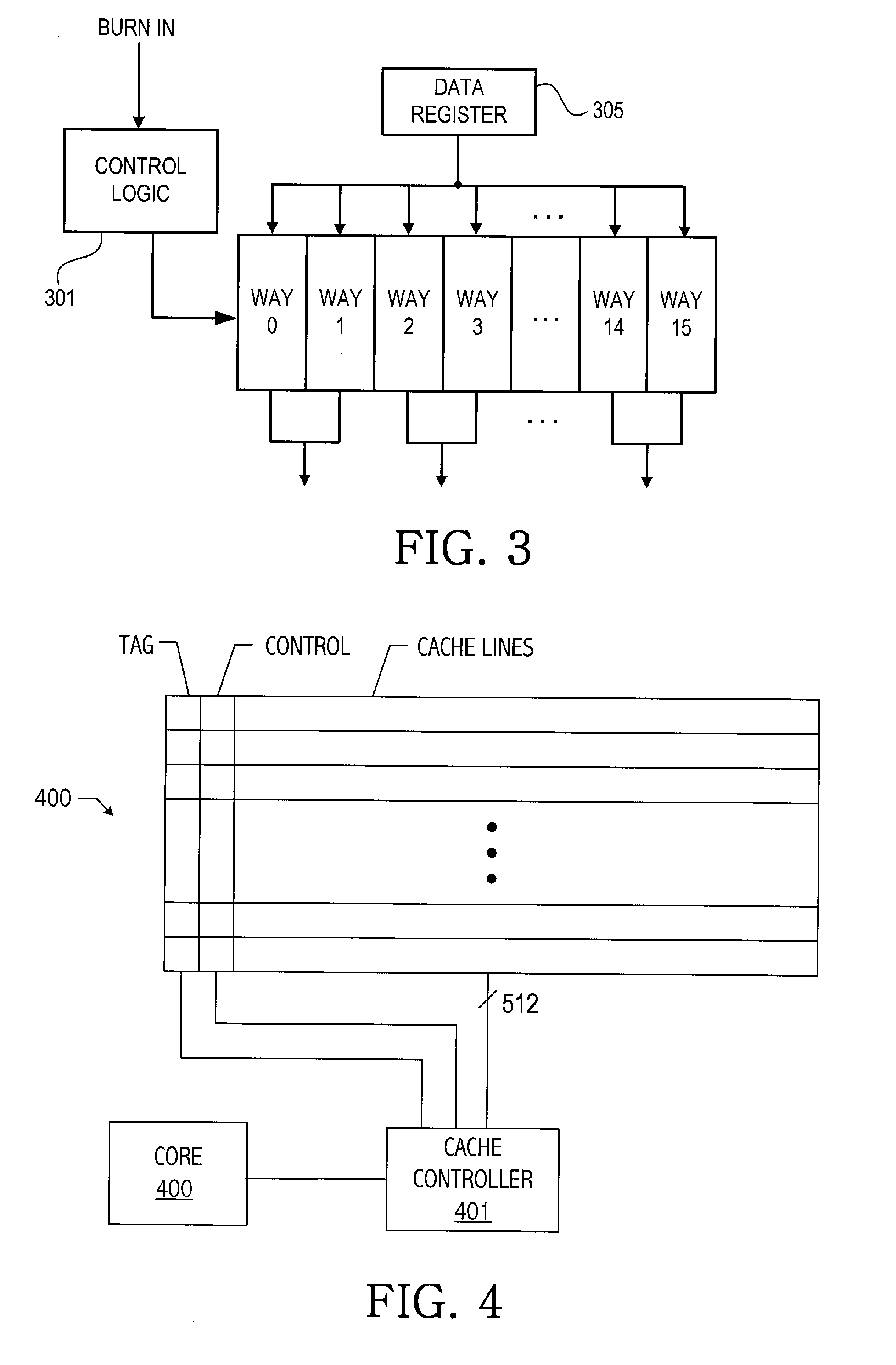Method and apparatus to achieve more level thermal gradient
- Summary
- Abstract
- Description
- Claims
- Application Information
AI Technical Summary
Benefits of technology
Problems solved by technology
Method used
Image
Examples
Embodiment Construction
)
[0018]Referring to FIG. 1, a typical microprocessor 101 is shown. As shown in FIG. 1, microprocessors are divided into two major areas: the core region 103 and the cache 105. The “core” includes the central processing unit and can have a high number of transistors switching at any one time. The “cache” contains memory elements and typically has a low percentage of transistors active. Further, the core typically requires faster transistors which draw more power even in a static mode. The cache can use transistors with a much lower leakage value. Hence, the core will typically consume more power per area (higher power density) than the cache during normal operation and during burn-in unless steps are taken to address the different power density differences in the core and cache during burn-in. The different power consumption in the core and cache areas of the processor exacerbates burn-in problems due to thermal gradients. Note that cache 105 may include multiple caches, e.g., L1, L2...
PUM
 Login to View More
Login to View More Abstract
Description
Claims
Application Information
 Login to View More
Login to View More - R&D
- Intellectual Property
- Life Sciences
- Materials
- Tech Scout
- Unparalleled Data Quality
- Higher Quality Content
- 60% Fewer Hallucinations
Browse by: Latest US Patents, China's latest patents, Technical Efficacy Thesaurus, Application Domain, Technology Topic, Popular Technical Reports.
© 2025 PatSnap. All rights reserved.Legal|Privacy policy|Modern Slavery Act Transparency Statement|Sitemap|About US| Contact US: help@patsnap.com



